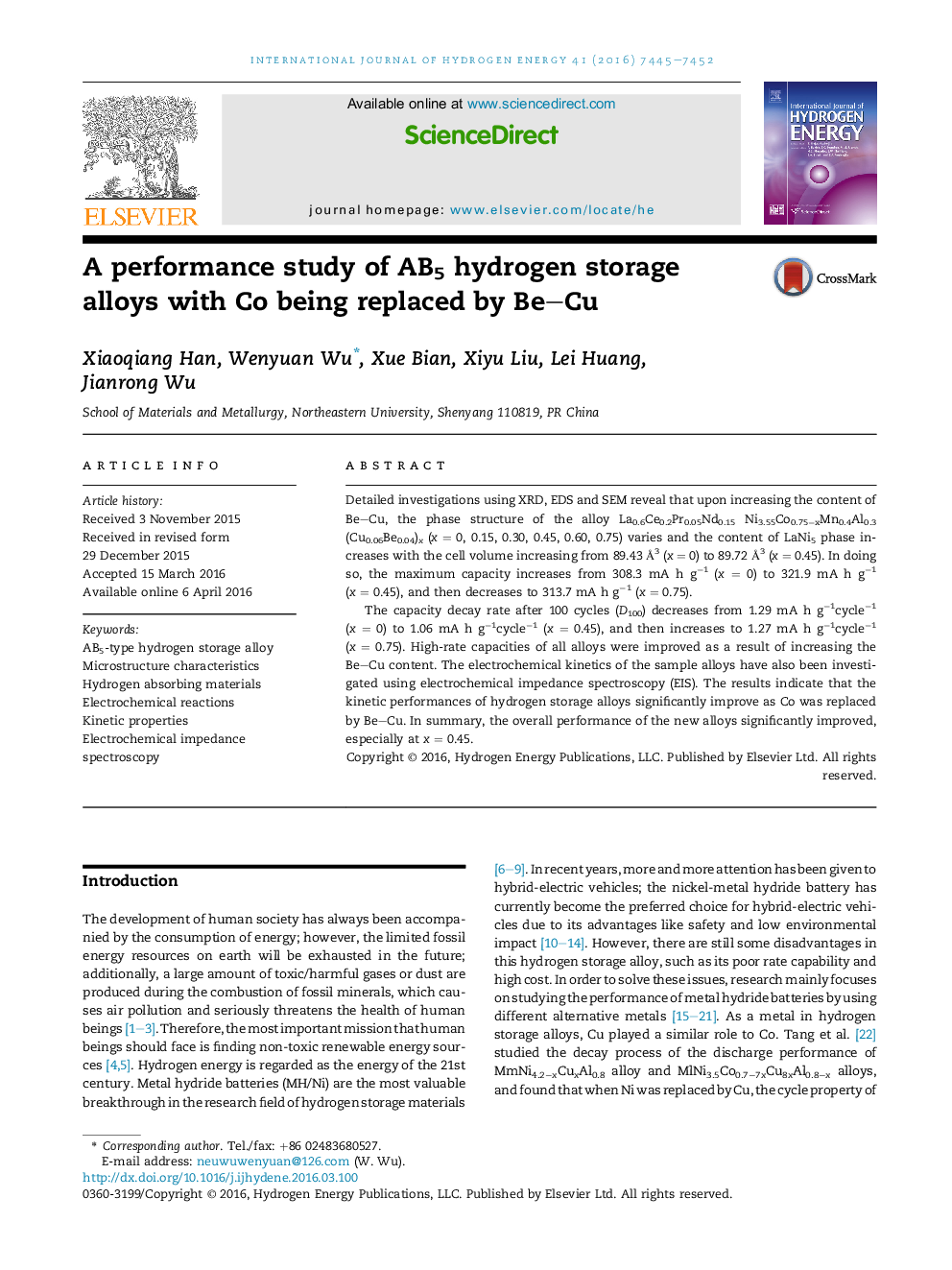| Article ID | Journal | Published Year | Pages | File Type |
|---|---|---|---|---|
| 1268697 | International Journal of Hydrogen Energy | 2016 | 8 Pages |
•The favorable activation properties were exhibited on all the alloy electrodes.•The substitution of BeCu for Co improved the overall kinetics properties evidently.•With the charge-transfer resistance decreasing, the exchange current density increased at the same time.
Detailed investigations using XRD, EDS and SEM reveal that upon increasing the content of BeCu, the phase structure of the alloy La0.6Ce0.2Pr0.05Nd0.15 Ni3.55Co0.75−xMn0.4Al0.3 (Cu0.06Be0.04)x (x = 0, 0.15, 0.30, 0.45, 0.60, 0.75) varies and the content of LaNi5 phase increases with the cell volume increasing from 89.43 Å3 (x = 0) to 89.72 Å3 (x = 0.45). In doing so, the maximum capacity increases from 308.3 mA h g−1 (x = 0) to 321.9 mA h g−1 (x = 0.45), and then decreases to 313.7 mA h g−1 (x = 0.75).The capacity decay rate after 100 cycles (D100) decreases from 1.29 mA h g−1cycle−1 (x = 0) to 1.06 mA h g−1cycle−1 (x = 0.45), and then increases to 1.27 mA h g−1cycle−1 (x = 0.75). High-rate capacities of all alloys were improved as a result of increasing the BeCu content. The electrochemical kinetics of the sample alloys have also been investigated using electrochemical impedance spectroscopy (EIS). The results indicate that the kinetic performances of hydrogen storage alloys significantly improve as Co was replaced by BeCu. In summary, the overall performance of the new alloys significantly improved, especially at x = 0.45.
